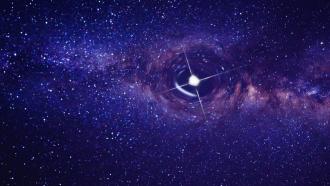
Neutrinos are the elusive sub-atomic particles in the Universe. They are abundant throughout the universe and tens of thousands pass through our body every second!
'Neutrino' which literally means 'little neutral one' has neither mass nor charge, and it travels almost at the speed of light. They interact by weak-nuclear force, a force acting in the short range. They barely interact with matter. It is estimated that a whopping one light year thick block of lead is needed to stop a neutrino! That's one half trillion kilometers!
So how do we detect them? Predicted by Wolfgang Pauli in 1931, neutrinos were discovered in 1959. In the recent times, physicists are coming up with ingenious ways to detect them. Neutrino telescopes like Super-Kamiokande in Japan and IceCube in the South Pole are built to detect and observe these tiny elusive particles.
Scientists theorize that neutrinos were formed even before atoms during the Big Bang. They're commonplace in all nuclear reactions, like the ones that power our cities or the stars in sky! Since neutrinos do not interact with matter, unlike light, a sudden burst of neutrino can signal a supernova (death of a star). These neutrino bursts act as an early warning for astronomers helping them prepare before the light from the supernova reaches the earth!
More neutrino research will demystify many objects and phenomena in the Universe including the gamma rays, black holes and dark matter.






